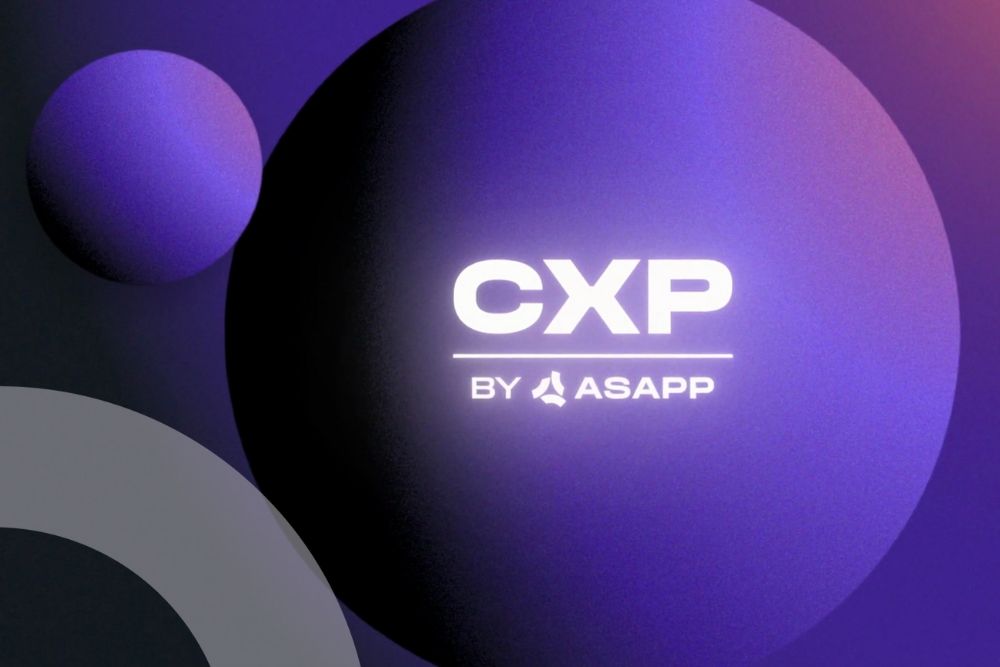Macario Namie

Macario Namie, Marketing
Why your digital messaging platform is failing you
People dread contacting customer service. It means they have a problem or a need they can’t solve on their own. Experience has shown them it’s rarely quick and easy to resolve issues. Phone calls often come with long hold times, transfers between agents, and explaining the problem again and again.
Many people prefer messaging to phone calls for all their communications—but are met with disappointment when they try to message with their favorite consumer brands.
It’s not that most companies don’t offer messaging or chat in some form. It’s just that trying to resolve an issue by chat is often even worse than calling, so it has not reduced the volume of calls in the way companies hoped.
Why are these systems failing you?
You’ve got pipes.
You need something more.
The problem is that most of these systems were built on chat technology developed in the 1990s—and haven’t evolved much since then. They provide a basic communications channel for conversations between consumers and agents. And, they enable agents to engage with more than one customer at a time.
BUT this legacy technology doesn’t do anything to empower those agents to provide great service for anyone, let alone more than one at a time.
Meanwhile consumer expectations have evolved significantly over the past 30 years. They want companies to value their relationship and demonstrate that with readily available personalized and competent service in the channels they prefer to use. If a company misses, today’s consumers don’t hesitate to call them out in social media. And, with low barriers to switching they don’t stay with brands that don’t get the message.
The oldtimers may say they help agents –
but check the results.
Most chat solutions claim to use AI to help agents solve customer issues. But in reality, they only use simple AI to diagnose intent at the beginning of an interaction, and that’s where it ends. Little or no ‘intelligence’ is applied to the rest of the conversation, so agents do what they’ve always done: Follow a series of rules-based suggestions, rely on their own skills and knowledge (often after only minimal training), hunt for answers in their toolset, consult with other agents, and transfer the contact to someone else when they can’t get resolution.

It’s not surprising that a bit of AI layered on outdated technology is not delivering meaningful results.
Macario Namie
It’s time to REALLY help your agents.
Customer service is long overdue for real innovation. Legacy chat has its place in history. Now it’s time to harness groundbreaking advancements in AI—and realize the full potential of this technology to transform customer experience performance.
What’s possible when you reimagine customer experience with AI as foundational technology? Machine learning can be infused in every aspect of digital care interactions in an integrated system that will:
- Provide AI-driven predictive suggestions based on continuous learning, to guide agents on what to say and what to do to resolve issues quickly.
- Dynamically integrate automation into the workflow to handle routine tasks before, during, and after agent interaction, reducing agent workload.
- Enable rich personalization by providing agents with the full context of the consumer’s interactions before this engagement.
- Use a multivariate model to manage concurrency for agents—considering factors like agent experience, complexity of issues already engaged, customer history and sentiment, and more to set capacity in the moment.
- Give you deep—and actionable—insight into your customers’ motivations and concerns through both real-time and historical AI-driven analysis of every conversation.
How does 3X productivity sound?
Helping agents helps companies achieve breakthrough results.
We’ve seen it time and again at ASAPP as our customers double and triple productivity—yes, really—and at the same time increase customer satisfaction scores and build brand loyalty.
That’s something no legacy chat technology can do.
Let us show you real results—in less than 60 days.
To realize Forrester’s vision of conversational intelligence, a human focus is needed.
For the CX industry, success always relied on an ability to deliver high-quality customer interactions at scale. The availability of omnichannel opened up new, convenient, avenues for customers to engage with organizations, yet it also increased the volume of interactions needing resolution. But thanks to modern advances in AI research, conversational and speech intelligence is having a new renaissance moment to improve CX revenue and efficiency at this rising scale.
As proof of this trend, Forrester Research released their new Q2 2021 report, “Now Tech: Conversation Intelligence” which names ASAPP among the leading conversation intelligence providers. The report guides forward-looking organizations to harness conversational intelligence in three key areas:
- Delivering CX insights at scale.
- Solutions which help organizations understand the voice of the customer and the agent at every interaction.
- Improving CX behavior at scale.
- Solutions which monitor and guide agents on what to say, actions to take, or areas to coach an agent.
- Accelerating revenue.
- Solutions which give sales teams insights they need to drive a greater volume of better leads and to ensure they are acted upon.
In looking at these areas, it’s no surprise that organizations like American Airlines and DISH are turning to ASAPP for real-time insights that empower customer and sales agents to achieve peak performance. At ASAPP, we believe that intelligence is best deployed at the point of where it matters: in real time where the interactions occur. It’s why we’re committed to advancing true AI which is redefining automation in contact center operations to triple throughput, increase digital adoption and transform contact center operations with lower operational costs.

Real-time insights from a continuously learning system improve a company’s ability to deliver highly personalized customer experiences—and substantially improve efficiency at the same time.
Macario Namie
This real time conversational Intelligence replaces yesterday’s rules-based systems by capitalizing on the insights of your agents and customers. A rules-based system, whether it feeds chatbots or humans, only captures a fraction of the available knowledge and doesn’t take advantage of the lessons learned from today’s data pools. Rigid rules-based systems aren’t flexible or generalizable for diverse customer needs, as no rules-based system will deliver customized, real-time intelligence that equip agents in what to say the moment actions occur.
It’s time for us to harness conversational intelligence that applies the knowledge of agents at scale. CX leaders who utilize a combination of conversational intelligence and automation understand how this leads to better customer voice and digital experiences that increase Customer Satisfaction (CSAT) and Net Promoter Scores (NPS). It’s why organizations that deploy ASAPP see an exponential improvement in performance that delivers measurable results in less than 60 days.
That’s all to say that we’re proud to see further recognition of ASAPP’s value in conversational intelligence. The Forrester Research report builds on our distinction as a “Cool Vendor” by Gartner. How are you thinking of using conversation intelligence at your organization?
Read the full report by Forrester Research for more details.
See the press release here.
Gartner Recognizes ASAPP for Continuous Intelligence in CX
Every year Gartner scans the horizons for companies who offer technology or services that are innovative, impactful, or intriguing. Gartner analysts might ask themselves: What’s something that customers could not do before? What technical innovation is focused on producing business impact? Or what new technology or service appears to be addressing systemic challenges?
This year’s Gartner report naming ASAPP as a “Cool Vendor” affirms our efforts at the intersection of artificial intelligence (AI) and customer experience (CX). We entered into this $600 billion industry because we wanted to create real change—building machine learning products that augment and automate the world’s workflows—and address the most costly and painful parts of CX that are largely ignored today.
Despite billions of dollars spent on technology designed to keep customers away from speaking with agents—starting with IVRs a few decades ago and most recently, chatbots—the human agent is still there. And in record numbers. Most large B2C organizations have actually increased their agent population over the last several years. And it is these human agents, the ones who represent your brand to millions of customers, who have been most ignored by innovators.

As ASAPP followers know well, this is why we exist. By embracing AI automation—not as a replacement, but as a collaborator—to human agents, the entire performance of sales and service contact centers is dramatically elevated. The company benefits from radical increases in organizational productivity, while the customers get exactly what they want—the right answer in the fastest possible time.
We’re proud of the academic recognition ASAPP Research achieves for advancing the state of the art of automatic speech recognition (ASR), NLP, and Task-Oriented Dialogue. However, it’s the business results of this applied research that keeps ASAPP moving forward. We celebrate this Gartner recognition with our customers like American Airlines, Dish and JetBlue, who are seeing the business results of AI in their customer service.
So what makes a company applying artificial intelligence for customer experience a “Cool Vendor?” Well, check out the Gartner report. However, I would say it’s our exclusive focus on human performance within CX. Learn more by reading this year’s Gartner Cool Vendor report.
GARTNER DOES NOT ENDORSE ANY VENDOR, PRODUCT OR SERVICE DEPICTED IN ITS RESEARCH PUBLICATIONS, AND DOES NOT ADVISE TECHNOLOGY USERS TO SELECT ONLY THOSE VENDORS WITH THE HIGHEST RATINGS OR OTHER DESIGNATION. GARTNER RESEARCH PUBLICATIONS CONSIST OF THE OPINIONS OF GARTNER’S RESEARCH ORGANIZATION AND SHOULD NOT BE CONSTRUED AS STATEMENTS OF FACT. GARTNER DISCLAIMS ALL WARRANTIES, EXPRESSED OR IMPLIED, WITH RESPECT TO THIS RESEARCH, INCLUDING ANY WARRANTIES OF MERCHANTABILITY OR FITNESS FOR A PARTICULAR PURPOSE.
The false imperative of customer service automation
Automation has become the Holy Grail of the customer experience domain. Since the rise of Interactive Voice Response systems in the mid-1980s through to today’s chatbots, the promise of automation has always been the same: keep customers away from talking to agents, reducing the need for agents, ultimately lowering costs. Vendors have (dubiously) added one more message—customers actually prefer an automated interaction—implying that if given the choice we’d rather use a chatbot instead of chatting with a human agent. (I personally don’t believe it and surveys validate my skepticism.)
Unfortunately the result of this technology enthusiasm is that if a customer does reach an agent, that is considered an automation failure. It is binary—either it’s automated (no agent) or not automated (live agent).
This is a deeply flawed view.
Customers talking to agents is not a failure of automation. But thinking that the sole use of automation is to keep customers away from agents is a failure of the imagination.
Automation is a rich capability that should be engaged throughout the customer journey and agent workflows to provide an effective and efficient experience that’s fantastic for all involved.

When automation is integrated into workflows agents are significantly more efficient and customers benefit from faster problem resolution.
Macario Namie
Agents are hired because we need their brains—to solve complex problems, to bring emotional empathy, and to positively represent the company brand. Despite what many vendors would have you believe, the state of technology is simply not good enough to replace all your agents. And it won’t be anytime soon. But that doesn’t mean we can’t use technology—and AI-driven automation in particular—to augment human agents and make them radically more productive.
Inspecting the work of a customer service agent highlights tremendous opportunities for automation. An agent’s day is filled with an assortment of workflows, processes, and tasks—looking up customer information, entering data, sharing documents with customers, collecting payment, typing contact summaries, and such. While it might seem simple to automate these efforts, that’s not the reality. Interactions are dynamic and context varies, so it’s nearly impossible for someone to write enough rules to intelligently invoke automation for all the possible scenarios.
While complex, dynamic and data-rich scenarios overwhelm the human brain, machines are perfectly capable of processing it all. Artificial intelligence technologies are designed to recognize patterns and meanings in what appear to be randomness—and through machine learning, to make predictions of the logical steps to take when a similar situation arises. When we use AI to drive the right automation at the right time—interspersing it with agent actions, we improve results in a way that’s not possible with a binary automaton-or-agent approach.
The economic impact of augmenting agents with automation can be massive. At ASAPP, we’ve seen customers dramatically increase their throughput, with one customer reporting an incredible 2x gain. That’s the economic equivalent of deflecting 50% of the calls away from agents—but easier to achieve, and more pleasing to customers.











